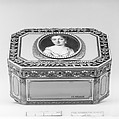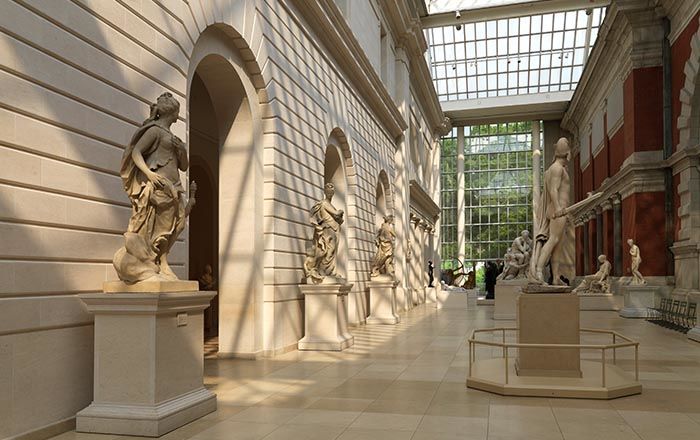Snuffbox with portrait of a woman
Joseph Etienne Blerzy French
Miniature attributed to Continental (possibly Swiss) Painter Continental/Swiss
Not on view
In eighteenth-century Europe, Paris led the production of high-quality luxury goods. Parisian goldsmiths made a wide range of small, personal articles such as snuffboxes; étuis to hold sealing wax, tweezers, or utensils for sewing; souvenirs, which contained thin ivory tablets for note taking; and shuttles for knotting lace. Gold snuffboxes and boxes decorated with portrait miniatures were prized and frequently given as royal gifts, often to ambassadors or members of the court in lieu of cash payments for their services. Coveted and admired, these boxes were produced from a variety of materials. The best were skillfully made of gold and embellished with diamonds, enameled decoration, lacquer, and other luxurious materials. By the middle of the century, the taking of snuff had become an entrenched social ritual, and the snuffbox, too, had become an important social prop. Snuffboxes were considered highly fashionable accessories, with some merchants advertising new boxes with each change of season. The popularity of snuffboxes extended to all levels of society, and for those who could not afford gold, boxes were produced in less expensive materials such as silver, tortoiseshell, porcelain, or domestically produced lacquer.
This miniature is set in a gold-and-enamel box made by Joseph Étienne Blerzy (apprenticed 1750, master 1768, working 1806) in Paris in 1776–77. The box bears five marks, among them the maker’s mark JEB and the Paris marks for 1775–81.
The sitter’s costume dates about 1710. The portrait, which is in the style of Charles Boit (1663–1727) or Christian Friedrich Zincke, may have been done at that time and would therefore be earlier than the box. But, given the curious disproportion between the head and the bust, it may be a later pastiche which was made for setting in the box.
This image cannot be enlarged, viewed at full screen, or downloaded.
This artwork is meant to be viewed from right to left. Scroll left to view more.



